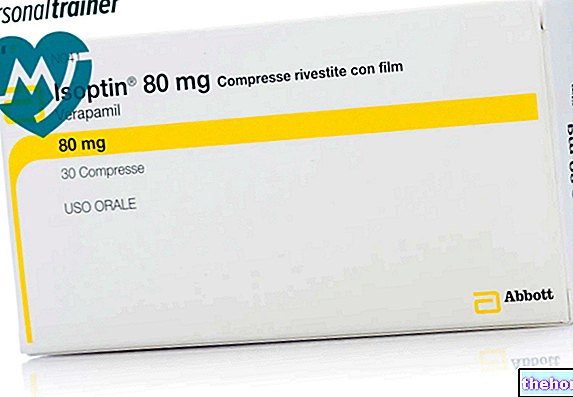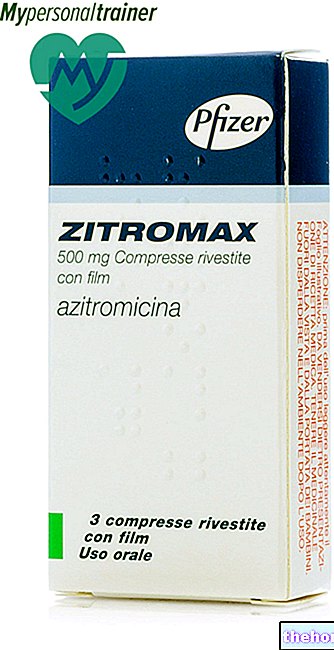Active ingredients: Zolmitriptan
Zomig 2.5 mg and 5 mg film-coated tablets
Zomig package inserts are available for pack sizes:- Zomig 2.5 mg and 5 mg film-coated tablets
- Zomig 2.5 mg / dose and 5 mg / dose nasal spray, solution
- Zomig Rapimelt 2.5 mg and 5 mg orodispersible tablets
Indications Why is Zomig used? What is it for?
Zomig contains zolmitriptan and belongs to a group of medicines called triptans.
Zomig is used for the treatment of migraine headache.
- Migraine symptoms can be caused by dilation of the blood vessels in the head. Zomig is believed to reduce the dilation of these blood vessels. This helps relieve headaches and other symptoms of a migraine attack, such as nausea or migraine. vomiting and sensitivity to light and sound.
- Zomig only works when the migraine attack has started. It does not prevent the onset of the attack
Contraindications When Zomig should not be used
Do not take Zomig
- if you are allergic (hypersensitive) to zolmitriptan or any of the other ingredients of this medicine (see section 6: Further information)
- if you have high blood pressure
- if you have ever had heart problems, including heart attacks, angina (chest pain caused by exercise or exertion), Prinzmetal's angina (chest pain that appears at rest) or if you have experienced heart-related symptoms such as breathlessness or chest pressure
- if you have had a stroke or short-term stroke-like symptoms (transient ischemic attack or TIA)
- if you have severe kidney problems
- if you are taking other migraine medicines (eg ergotamine or ergot-type medicines such as dihydroergotamine and methysergide) or other triptans for migraine at the same time. See section: "Taking Zomig with other medicines" for more information.
If in doubt, consult your doctor or pharmacist.
Precautions for use What you need to know before taking Zomig
Before taking Zomig, tell your doctor if:
- you are at risk for ischemic heart disease (poor blood flow in the arteries of the heart). The risk is higher if you smoke, have high blood pressure, have high cholesterol levels, have diabetes, or if someone in your family has ischemic heart disease
- if you have been told that you have Wolff-Parkinson-White syndrome (a type of heartbeat abnormality)
- if you have ever had liver problems
- if you have headaches other than your usual migraine headache
- if you are taking a medicine to treat depression (see "Taking Zomig with other medicines" later in this section). If you are hospitalized, tell the medical staff that you are taking Zomig.
Zomig is not recommended for people under the age of 18 or over 65.
As with other migraine treatments, using too much Zomig can cause daily headaches or can make migraine headaches worse. Talk to your doctor if you think this is the case. You may need to stop using Zomig to correct the problem.
Interactions Which drugs or foods can change the effect of Zomig
Tell your doctor or pharmacist if you are taking or have recently taken any other medicines including herbal medicines and medicines obtained without a prescription
In particular, tell your doctor if you are taking any of the following medicines:
Medicines for migraine
- If you take triptans other than Zomig, allow 24 hours to pass before taking Zomig.
- After taking Zomig, allow 24 hours to pass before taking any other triptans other than Zomig
- If you take medicines containing ergotamine or medicines of the ergot type (such as dihydroergotamine or methysergide), allow 24 hours to pass before taking Zomig.
- After taking Zomig, allow 6 hours to elapse before taking ergotamine or ergot-type medicines.
Medicines for Depression
- moclobemide or fluvoxamine
- medicines called SSRIs (selective serotonin reuptake inhibitors)
- medicines called SNRIs (serotonin and norepinephrine reuptake inhibitors) such as venlafaxine, duloxetine.
Other Medicines
- cimetidine (for digestive difficulties or stomach ulcer)
- a quinolone antibiotic (e.g. ciprofloxacin)
If you are taking herbal preparations containing St. John's wort (Hypericum perforatum), you are more likely to experience the side effects of Zomig.
Using Zomig with food and drink
You can take Zomig with or without food. Food does not affect Zomig's action.
Warnings It is important to know that:
Pregnancy and breastfeeding
It is not known whether taking Zomig during pregnancy is harmful. Before taking Zomig, tell your doctor if you are pregnant or trying to get pregnant.
Do not breastfeed for 24 hours after taking Zomig.
Driving and using machines
During a migraine attack, your reactions may be slower than usual. This should be borne in mind when driving or using tools or machines.
Zomig is unlikely to affect your ability to drive or use tools or machines. However, it is best to wait to see what the effect of Zomig is before embarking on these activities.
Important information about some of the ingredients of Zomig
Zomig tablets contain lactose which is a type of sugar. If you have been told by your doctor that you cannot tolerate or digest some sugars (have an "intolerance to some sugars), consult your doctor before taking this medicine.
Dose, Method and Time of Administration How to use Zomig: Posology
Always take Zomig exactly as your doctor has told you. If in doubt, you should consult your doctor or pharmacist.
You can take Zomig as soon as the migraine headache starts. It can also take it once the attack is underway.
The usual dose is one tablet (2.5 mg or 5 mg). • Swallow the tablet with a drink of water.
You can take another tablet if the migraine is still present after two hours or if it returns within 24 hours.
If these tablets have not been of sufficient help for your migraine, tell your doctor. Your doctor may increase the dose to 5 mg or change your treatment.
Do not take more than the prescribed dose.
Do not take more than two doses in one day. If you have been prescribed the 2.5 mg tablet, the maximum daily dose is 5 mg. If you have been prescribed the 5 mg tablet, the maximum daily dose is 10 mg.
Overdose What to do if you have taken too much Zomig
If you have taken more Zomig than prescribed by your doctor, contact your doctor immediately or go to the nearest hospital. Take Zomig with you.
Side Effects What are the side effects of Zomig
Like all medicines, Zomig can cause side effects, although not everybody gets them.
Some of the symptoms below could be part of the migraine attack itself.
Common side effects (affecting more than 1 in 100 people):
- Abnormal sensation such as tingling in the fingers and toes or skin that is sensitive to the touch
- Sleepiness, dizziness or a sense of heat
- Headache
- Irregular heartbeat
- Nausea
- He retched
- Stomach ache
- Dry mouth
- Muscle weakness or muscle pain
- Weakness
- Heaviness, tightness, pain or a feeling of pressure in the throat, neck, arms and legs or chest
- Difficulty in swallowing.
Uncommon side effects (affecting less than 1 in 100 people):
- Very fast heartbeat
- Slightly higher blood pressure
- Increased amount of urine or the need to urinate
Rare side effects (affecting less than 1 in 1,000 people):
- Allergic / hypersensitivity reactions, including raised skin rash (hives) and swelling of the face, lips, mouth, tongue and throat. If you think Zomig is causing an allergic reaction, stop taking it and contact your doctor immediately.
Very rare side effects (affecting less than 1 in 10,000 people):
- Angina (chest pain, often caused by exercise), heart attacks or spasms of the blood vessels of the heart. If you notice chest pain or breathlessness after taking Zomig, contact your doctor and do not take further Zomig.
- Spasms of the blood vessels in the intestine, which can damage the intestines. You may notice stomach pain or bloody diarrhea. If this happens, contact your doctor and do not take more Zomig.
Reporting of side effects
If you get any side effects, talk to your doctor or pharmacist. This includes any possible side effects not listed in this leaflet. You can also report side effects directly via the national reporting system at www.agenziafarmaco.it/it/responsabili. By reporting side effects you can help provide more information on the safety of this medicine.
Expiry and Retention
- Keep out of the reach and sight of children.
- Do not use Zomig after the expiry date which is stated on the pack. The expiry date refers to the last day of the month.
- Do not store above 30 ° C.
- Medicines should not be disposed of via wastewater or household waste. Ask your pharmacist how to throw away medicines you no longer use. This will help protect the environment.
Other information
What Zomig contains
- The active ingredient is zolmitriptan. Zomig film-coated tablets contain 2.5 mg or 5 mg of zolmitriptan.
- The other ingredients are: anhydrous lactose, microcrystalline cellulose, sodium starch glycolate (type A), magnesium stearate, macrogol, hypromellose, titanium dioxide (E171), yellow iron oxide (E172, only in 2.5 mg tablets), red iron oxide (E172, 5 mg tablets only).
What Zomig looks like and contents of the pack
- Zomig 2.5 mg film-coated tablets are yellow, round and debossed with the letter "Z" on one side.
- Zomig 5 mg film-coated tablets are pink, round and debossed with the letter "Z" on one side.
- Zomig 2.5 mg and 5 mg film-coated tablets are available in blisters containing 3, 6 (with or without container), 12 or 18 tablets.
The container is a hard plastic case in which you can store the tablets for convenience. If you use the container, you must keep the outer carton and this leaflet as you may need to refer to them again.
Not all pack sizes may be marketed.
Source Package Leaflet: AIFA (Italian Medicines Agency). Content published in January 2016. The information present may not be up-to-date.
To have access to the most up-to-date version, it is advisable to access the AIFA (Italian Medicines Agency) website. Disclaimer and useful information.
01.0 NAME OF THE MEDICINAL PRODUCT
ZOMIG TABLETS COATED WITH FILM
02.0 QUALITATIVE AND QUANTITATIVE COMPOSITION
Zolmitriptan.
Each 2.5 mg film-coated tablet contains 2.5 mg of zolmitriptan.
Each 5 mg film-coated tablet contains 5 mg of zolmitriptan.
Excipients:
Each 2.5 mg film-coated tablet contains 100 mg of lactose.
Each 5 mg film-coated tablet contains 200 mg of lactose.
For the full list of excipients see section 6.1.
03.0 PHARMACEUTICAL FORM
Film-coated tablet.
Round, biconvex, yellow or pink film-coated tablets containing 2.5 mg and 5 mg zolmitriptan respectively. The tablets are debossed with the letter "Z" on one side.
04.0 CLINICAL INFORMATION
04.1 Therapeutic indications
Acute treatment of migraine headache with or without aura.
04.2 Posology and method of administration
The recommended dose of Zomig tablets for the treatment of a migraine attack is 2.5 mg. It is recommended that Zomig tablets be taken as soon as possible after the onset of migraine headaches, however they are effective even if taken at a later stage.
The tablets should be swallowed whole and with water.
If migraine symptoms reappear within 24 hours of the initial response, a second dose may be taken. If a second dose is required, this should not be taken until 2 hours after the initial dose. If the patient does not respond to the first dose. a second dose is unlikely to be of benefit during the same attack.
If the patient has not achieved a satisfactory response with the 2.5 mg dose, Zomig doses of 5 mg may be considered for subsequent attacks.
The total daily dose should not exceed 10 mg. Zomig should not be taken in more than 2 doses in any 24 hour period.
Zomig is not indicated for migraine prophylaxis.
Use in children (under 12 years of age)
The safety and efficacy of zolmitriptan tablets in pediatric patients have not been evaluated. Therefore, the use of Zomig in children is not recommended.
Teenagers (12-17 years of age)
The efficacy of Zomig tablets has not been demonstrated in a placebo-controlled clinical trial in patients 12-17 years of age. Therefore, the use of Zomig tablets in adolescents is not recommended.
Use in patients over 65 years of age
The safety and efficacy of zolmitriptan in patients over 65 years of age have not been established. Therefore, the use of Zomig in the elderly is not recommended.
Patients with hepatic insufficiency
The metabolism of zolmitriptan is reduced in patients with hepatic insufficiency (see section 5.2). For patients with moderate or severe hepatic insufficiency, a maximum dose of 5 mg in 24 hours is recommended. However, no dose adjustment is required for patients with insufficiency. mild liver disease.
Patients with renal impairment
No dosage adjustment is required in patients with creatinine clearance greater than 15 mL / min. (see section 4.3 and section 5.2).
Interactions requiring dose adjustments (see section 4.5)
A maximum dose of 5 mg in 24 hours is recommended in patients taking MAO-A inhibitors.
A maximum dose of 5 mg zolmitriptan in 24 hours is recommended in patients taking cimetidine.
In patients taking specific inhibitors of CYP 1A2, such as fluvoxamine and quinolones (e.g. ciprofloxacin), a maximum dose of 5 mg of zolmitriptan in 24 hours is recommended.
04.3 Contraindications
Zomig is contraindicated in patients with known hypersensitivity to zolmitriptan or to any of the excipients.
Moderate or severe hypertension and mild uncontrolled hypertension.
This class of compounds (5HT1B / 1D receptor agonists) has been associated with coronary vasospasm, consequently patients with ischemic heart disease were excluded from clinical trials.
Therefore, Zomig should not be used in patients who have had a myocardial infarction or who have ischemic heart disease, coronary vasospasm (Prinzmetal's angina), peripheral vascular disease or to patients who have symptoms or signs indicative of ischemic heart disease.
Concomitant administration of zolmitriptan with ergotamine, ergotamine derivatives (including methysergide), sumatriptan, naratriptan and other 5HT1B / 1D receptor agonists is contraindicated (see section 4.5).
Zolmitriptan should not be given to patients with a history of cerebrovascular accident (ACV) or transient ischemic attack (TIA).
Zolmitriptan is contraindicated in patients with creatinine clearance below 15 ml / min.
04.4 Special warnings and appropriate precautions for use
Zolmitriptan should only be given when a clear diagnosis of migraine has been made. As with other acute therapies for migraine, caution should be exercised to rule out other potentially serious neurological conditions before treating headache in patients previously undiagnosed as migraine and in migraine patients presenting with atypical symptoms. use in hemiplegic, basilar or ophthalmoplegic migraine. Strokes and other cerebrovascular events have been described in patients treated with 5HT1B / 1D receptor agonists. It should be noted that migraine sufferers may be at risk for some cerebrovascular events.
Zolmitriptan should not be given to patients with symptomatic Wolff-Parkinson-White syndrome or arrhythmias associated with other accessory pathways of cardiac conduction.
Coronary vasospasm, angina pectoris and myocardial infarction have been reported in very rare cases, as with other 5HT1B / 1D receptor agonists.
Zomig must not be given to patients with risk factors for ischemic heart disease (such as smoking, hypertension, hyperlipidaemia, diabetes mellitus, heredity) without first having a cardiovascular evaluation done (see section 4.3). Particular attention should be paid to postmenopausal women and men over 40 years of age with these risk factors.
Through such assessments, however, it is not always possible to identify all patients with heart disease, and in very rare cases, patients without any underlying cardiovascular disease have developed serious cardiac events.
As with other 5HT1B / 1D receptor agonists, heaviness, tightness or precordial tension have been described following administration of zolmitriptan (see section 4.8).
If chest pain or symptoms suggestive of ischemic heart disease appear, no further doses of zolmitriptan should be taken until appropriate medical evaluation has been made.
As with other 5HT1B / 1D receptor agonists, transient increases in systemic blood pressure have been reported in patients with or without a history of hypertension. Very rarely, these increases in blood pressure have been associated with significant clinical events.
The recommended dose of zolmitriptan should not be exceeded.
Side effects may be more common during concomitant use of triptans and herbal preparations containing St. John's wort (Hypericum perforatum).
Serotonin syndrome (including altered mental status, autonomic instability and neuromuscular abnormalities) has been reported following concomitant treatment with triptans and selective serotonin reuptake inhibitors (SSRIs) or serotonin and norepinephrine reuptake inhibitors (SNRIs). These reactions can be severe. If concomitant treatment with zolmitriptan and an SSRI or SNRI is clinically justified, it is suggested that the patient be kept under adequate observation, particularly at the start of treatment, in case of dose increases or the addition of another serotonergic drug (see paragraph 4.5).
Prolonged use of any pain reliever for headache treatment can worsen the situation. If this situation occurs or is suspected, the doctor should be consulted and treatment discontinued. The diagnosis of drug abuse headache should be suspected in patients who have frequent or daily headache despite (or due to) regular use of headache medication.
This medicinal product contains lactose. Patients with rare hereditary problems of galactose intolerance, the Lapp lactase deficiency or glucose-galactose malabsorption should not take this medicine.
04.5 Interactions with other medicinal products and other forms of interaction
Interaction studies have been conducted with caffeine, ergotamine, dihydroergotamine, paracetamol, metoclopramide, pizotifen, fluoxetine, rifampicin and propranolol without clinically relevant differences in the pharmacokinetics of zolmitriptan or its active metabolites being observed.
Data from healthy subjects suggest that there are no pharmacokinetic or clinically significant interactions between zolmitriptan and ergotamine. However, the increased risk of coronary vasospasm is a theoretical possibility and concomitant administration is contraindicated. It is recommended to wait at least 24 hours after the use of ergotamine-containing preparations before administering zolmitriptan. Conversely, it is advised to wait at least six hours after administration of zolmitriptan before administering an ergotamine-containing product (see section 4.3).
Following administration of moclobemide, a specific MAO-A inhibitor, there was a slight increase (26%) in the AUC of zolmitriptan and a 3-fold increase in the AUC of the active metabolite. Therefore, in patients treated with a MAO-A inhibitor, a maximum intake of 5 mg zolmitriptan in 24 hours is recommended. Medicines should not be taken concurrently if moclobemide doses greater than 150 mg bid are administered.
After administration of cimetidine, a general inhibitor of cytochrome P450, the half-life and AUC of zolmitriptan were increased by 44% and 48%, respectively. Furthermore, the half-life and AUC of the active N-desmethyl metabolite (183C91) were doubled.
Therefore, in patients taking cimetidine, a 24-hour dose of zolmitriptan not exceeding 5 mg is recommended.
Based on the general interaction profile, an interaction with specific inhibitors of CYP 1A2 cannot be excluded. Therefore, with substances of this type, such as fluvoxamine and quinolones (eg ciprofloxacin), the same dosage reduction is recommended.
Selegiline (a MAO-B inhibitor) and fluoxetine (an SSRI) did not cause any pharmacokinetic interactions with zolmitriptan. However, there have been reports of patients with symptoms consistent with serotonin syndrome (including altered mental status, autonomic instability, and neuromuscular abnormalities) following the use of selective serotonin reuptake inhibitors (SSRIs) or serotonin and serotonin reuptake inhibitors. norepinephrine (SNRI) and triptans (see section 4.4).
As with other 5HT1B / 1D agonists, zolmitriptan may delay the absorption of other medicinal products.
Concomitant administration of other 5HT1B / 1D agonists within 24 hours following treatment with zolmitriptan should be avoided. Similarly, administration of zolmitriptan within 24 hours of using other 5HT1B / 1D agonists should be avoided.
04.6 Pregnancy and lactation
Pregnancy
The safety of this medicinal product for use in pregnancy has not been established in women. Evaluation of experimental studies in animals does not indicate direct teratogenic effects. However, some results from embryotoxicity studies have suggested impaired embryonic viability. zolmitriptan should only be considered if the expected benefit to the mother is greater than any possible risk to the fetus.
Feeding time
Studies in lactating animals have shown that zolmitriptan passes into milk. There are no data on the passage of zolmitriptan into human breast milk. Therefore, caution should be exercised when intending to administer zolmitriptan to breastfeeding women. Infant exposure should be minimized by avoiding breastfeeding for 24 hours after treatment.
04.7 Effects on ability to drive and use machines
In a small group of healthy individuals there was no evidence of significant impairment of psychomotor performance, assessed by testing, with doses up to 20 mg of zolmitriptan. Caution is advised in patients performing tasks requiring attention (eg driving or operating machinery) as somnolence and other symptoms may occur during a migraine attack.
04.8 Undesirable effects
Possible side effects are generally transient, tend to occur within four hours of administration, repeated administration does not increase the frequency and resolve spontaneously without further treatment.
The following definitions refer to the incidence of undesirable effects:
Very common (≥1 / 10); common (≥1 / 100,
Within each frequency group, undesirable effects are presented in descending order of seriousness.
The following undesirable effects have been reported following administration of zolmitriptan:
Some symptoms may be part of the migraine attack itself.
Reporting of suspected adverse reactions
Reporting of suspected adverse reactions occurring after authorization of the medicinal product is important as it allows continuous monitoring of the benefit / risk balance of the medicinal product. Healthcare professionals are asked to report any suspected adverse reactions via the national reporting system. "address www.agenziafarmaco.gov.it/it/responsabili.
04.9 Overdose
The administration of 50 mg, in a single oral dose, to volunteers frequently resulted in the onset of sedation.
The elimination half-life of zolmitriptan tablets is 2.5 to 3 hours (see section 5.2) and therefore, in the event of overdose with Zomig tablets, patient monitoring should continue for at least 15 hours or as long as signs or symptoms persist.
There is no specific antidote for zolmitriptan. In case of severe intoxication, intensive care procedures are recommended, including the establishment and maintenance of a patent airway, the support of adequate oxygenation and ventilation, the monitoring and support of cardiovascular function.
The effect of hemodialysis and peritoneal dialysis on the serum concentration of zolmitriptan is unknown.
05.0 PHARMACOLOGICAL PROPERTIES
05.1 Pharmacodynamic properties
Pharmacotherapeutic group: selective serotonin agonists (5HT1 receptors)
ATC code: N02CC03.
Zolmitriptan has been shown to be a selective agonist of 5HT1B / 1D receptors that mediate vascular contraction. Zolmitriptan has a high affinity for human recombinant receptors, 5HT1B and 5HT1D and a modest affinity for 5HT1A receptors. Zolmitriptan has no significant affinity or pharmacological activity against other 5HT receptor subtypes (5HT2, 5HT3, 5HT4) or against adrenergic, histamine, muscarinic or dopaminergic receptors.
In animal models, administration of zolmitriptan causes vasoconstriction in the carotid arterial circulation. Furthermore, experimental studies conducted in animals suggest that zolmitriptan inhibits trigeminal nerve activity both centrally and peripherally, with inhibition of the release of neuropeptides (calcitonin gene-related peptide (CGRP), vasoactive intestinal peptide (VIP ) and Substance P).
In clinical trials, the onset of efficacy occurs after one hour, with an increase in efficacy on headache and other migraine symptoms, such as nausea, photophobia and phonophobia, observed between 2 and 4 hours.
Zolmitriptan is consistently effective in migraine with or without aura and in migraine associated with the menstrual cycle. Zolmitriptan, when taken during the aura, has not been shown to prevent migraine headache and therefore Zomig should be taken during the headache phase of migraine.
In 696 adolescents with migraine, at doses of 2.5 mg, 5 mg and 10 mg, a controlled clinical study failed to demonstrate the superiority of zolmitriptan tablets over placebo. The effectiveness has not been proven.
05.2 Pharmacokinetic properties
In humans, zolmitriptan is rapidly and well absorbed (at least 64%) after oral administration. The mean absolute bioavailability of the parent compound is approximately 40%. There is an active metabolite (the N-desmethyl metabolite), also " with 5HT1B / 1D agonist activity, which was 2 to 6 times more potent than zolmitriptan in animal models.
In healthy subjects, after single dose administration, zolmitriptan and its active metabolite, the N-desmethyl metabolite, exhibit dose proportional AUC and C over the dose range of 2.5 to 50 mg. L Absorption of zolmitriptan is rapid. In healthy volunteer subjects, 75% of Cmax is achieved within 1 hour, after which plasma concentrations of zolmitriptan are maintained at approximately this level for up to 4-5 hours after dosing.
Absorption of zolmitriptan is unaffected by the presence of food. There was no evidence of accumulation after repeated administration of zolmitriptan.
The plasma concentration of zolmitriptan and its metabolites is lower in the first 4 hours after drug administration during migraine than in migraine-free periods, indicating a delay in absorption in accordance with the reduction in gastric emptying rate. seen during a migraine attack.
Zolmitriptan is extensively eliminated by hepatic metabolism followed by urinary excretion of metabolites. There are three major metabolites: indole acetic acid (the major metabolite in plasma and urine) and N-oxidized and N-demethylated analogues. The N-desmethyl metabolite is active, while the other two are devoid of activity. Plasma concentrations of the N-desmethyl metabolite are approximately half those of the parent product, and therefore can be expected to contribute to the therapeutic effect of Zomig. More than 60% of a single oral dose is excreted in the urine (mainly under form of the indole acetic acid metabolite) and approximately 30% is excreted in the faeces, mainly as unchanged product.
Following intravenous administration, the mean total plasma clearance is approximately 10 mL / min / kg, of which one quarter is renal clearance. Renal clearance is higher than glomerular filtration rate, suggesting the presence of renal tubular secretion. The volume of distribution after intravenous administration is 2.4 l / kg. The binding of zolmitriptan and the N-desmethyl metabolite to plasma proteins is low (approximately 25%). The mean elimination half-life of zolmitriptan is 2.5 to 3 hours. The half-life of its metabolites is similar, suggesting that their elimination is a process limited by the rate of formation.
Renal clearance of zolmitriptan and all its metabolites is reduced (7-8 fold) in patients with moderate or severe renal impairment compared to healthy subjects, although the AUCs of parent compound and its active metabolite were only moderately higher. (respectively 16% and 35%), with an increase of one "hour, or up to 3 and 3.5 hours, in the half-life. These parameters are within the range of those seen in healthy volunteers.
A study conducted to evaluate the effect of hepatic impairment on the pharmacokinetics of zolmitriptan showed that AUC and Cmax were increased by 94% and 50% respectively in patients with moderate hepatic impairment and by 226% and 47% respectively in patients. with severe hepatic insufficiency compared to healthy volunteers. Exposure to metabolites, including the active metabolite, was decreased. For the active metabolite 183C91, AUC and Cmax were reduced by 33% and 44% respectively in patients with moderate hepatic impairment and 82% and 90% in patients with severe hepatic insufficiency.
The pharmacokinetic profile of zolmitriptan in healthy elderly subjects was similar to that seen in young healthy volunteers.
05.3 Preclinical safety data
Preclinical effects in single and repeated dose toxicity studies were observed only at exposures significantly in excess of the maximum human exposure.
Based on the results of in vivo and in vitro genetic toxicity studies, genotoxic effects of zolmitriptan are not expected under normal conditions of clinical use.
No clinically relevant tumors were observed in carcinogenicity studies in rats and mice.
Like other 5HT1B / 1D receptor agonists, zolmitriptan binds to melanin.
06.0 PHARMACEUTICAL INFORMATION
06.1 Excipients
Anhydrous lactose
Microcrystalline cellulose
Sodium starch glycolate (type A)
Magnesium stearate
Hypromellose
Macrogol (400 and 8000)
Iron oxide (E 172: yellow - 2.5 mg tablets; red - 5 mg tablets)
Titanium dioxide (E 171).
06.2 Incompatibility
Not relevant.
06.3 Period of validity
3 years.
06.4 Special precautions for storage
Do not store above 30 ° C.
06.5 Nature of the immediate packaging and contents of the package
2.5 or 5 mg tablets packed in blisters containing: 3, 6 (with or without container), 12 or 18 tablets.
The blister is made of Al-PVC / Al polyamide.
Not all pack sizes may be marketed.
06.6 Instructions for use and handling
No special instructions.
07.0 MARKETING AUTHORIZATION HOLDER
AstraZeneca S.p.A.
Volta Palace
Via F. Sforza
Basiglio (MI)
08.0 MARKETING AUTHORIZATION NUMBER
"2.5 mg film-coated tablets" 3 tablets in al-pvc / al A.I.C. 033345012
"2.5 mg film-coated tablets" 6 tablets in al-pvc / al A.I.C. 033345024
"2.5 mg film-coated tablets" 6 tablets in al-pvc / al blister with A.I.C. 033345036
"2.5 mg film-coated tablets" 12 tablets in al-pvc / al A.I.C. 033345048
"2.5 mg film-coated tablets" 18 tablets in al-pvc / al A.I.C. 033345051
"5 mg film-coated tablets" 3 tablets in al-pvc / al A.I.C. 033345063
"5 mg film-coated tablets" 6 tablets in al-pvc / al A.I.C. 033345075
"5 mg film-coated tablets" 6 tablets in al-pvc / al blister with A.I.C. 033345087
"5 mg film-coated tablets" 12 tablets in al-pvc / al A.I.C. 033345099
"5 mg film-coated tablets" 18 tablets in al-pvc / al A.I.C. 033345101
09.0 DATE OF FIRST AUTHORIZATION OR RENEWAL OF THE AUTHORIZATION
Date of first authorization: 7 August 1997
Date of last renewal: November 30, 2006.
10.0 DATE OF REVISION OF THE TEXT
June 2015




























